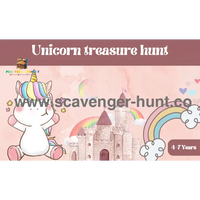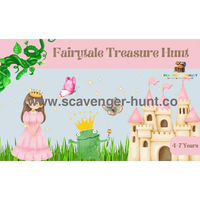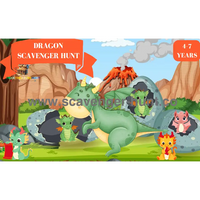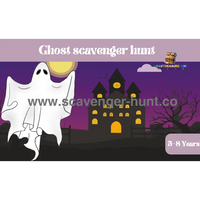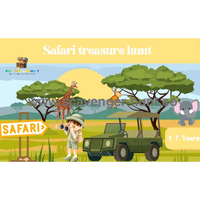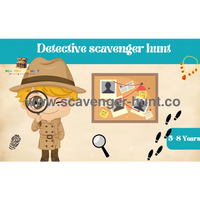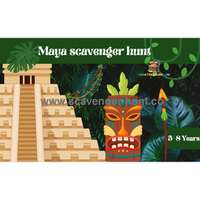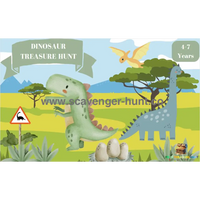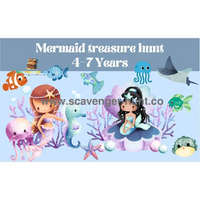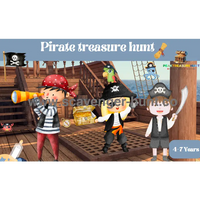👌The Secret to Crafting Perfect Scavenger Hunt Clues for Kids
Creating the perfect scavenger hunt for your children involves imagination, creativity, and a touch of whimsy. Scavenger hunts can transform an ordinary afternoon into a thrilling adventure, making them an ideal activity for birthday parties, family gatherings, or simply as a way to turn a day outdoors into an exciting quest. In this blog, we'll guide you through the steps of writing engaging scavenger hunt clues that will captivate the minds of young adventurers aged 4 to 12.
Understanding Your Audience
First and foremost, it's essential to tailor your clues to the age group of your participants. Younger children (ages 4-6) benefit from straightforward, pictorial clues or simple riddles that relate to their immediate surroundings. Older children (ages 7-12), however, might enjoy the challenge of more complex riddles, puzzles, or codes that require critical thinking. Keeping the clues age-appropriate ensures that the game is fun, engaging, and accessible to all players.
The Basics of Clue Writing
Crafting clues is the heart of your scavenger hunt. There are several types of clues you can use:
-
Rhyming Clues: These add a fun, poetic twist. For example, "This is where you rest your head, find your next clue where you go to bed."
-
Puzzle Clues: These require solvers to complete a puzzle or a simple math problem to discover their next location.
-
Riddle Clues: Riddles are perfect for making participants think. An example might be, "I have keys but open no lock. Find me where you check the time, but not on a clock."
Writing the perfect scavenger hunt clues is akin to weaving a tapestry of adventure and mystery, with clues as the threads that guide participants through the narrative you've created. The essence of a captivating scavenger hunt lies in its clues, which must strike a delicate balance between being challenging enough to thrill and straightforward enough to solve. This article delves into the basics of clue writing, offering a roadmap to creating an engaging and memorable scavenger hunt.
Rhyming Clues
Rhyming clues bring a touch of whimsy and fun to your scavenger hunt. They are especially appealing to younger participants, as the rhythmic pattern can make the clues easier to remember and adds a layer of entertainment. When crafting rhyming clues, aim for simple, clear language that directly leads to the next step or location. For instance, "This is where you rest your head, find your next clue where you go to bed." Such clues not only rhyme but also paint a clear picture of where to head next, making them perfect for participants of all ages.
Puzzle Clues
Puzzle clues are ideal for engaging the problem-solving skills of your hunters. They can range from jigsaw puzzles that reveal the next location when completed, to mathematical problems whose solutions point to a specific place or object. Puzzle clues are particularly suited for older children or teams, as they can encourage collaboration and discussion. For example, creating a simple cipher that needs decoding to reveal the next clue location adds an element of mystery and achievement when the puzzle is solved.
Riddle Clues
Riddle clues challenge participants to think critically and use their imagination. A well-crafted riddle can lead to a moment of epiphany that is both satisfying and motivating. Riddles work best when they are fair and the answer is within the participants' grasp, such as, "I have keys but open no lock. Find me where you check the time, but not on a clock." This riddle encourages participants to think outside the box and deduce that the answer is a keyboard (with "keys" but no lock) or a smartphone (where you check the time but it doesn't have a traditional clock face).
Tips for Effective Clue Writing
-
Know Your Venue: Tailor your clues to the location of your scavenger hunt. Whether it's a home, a park, or a museum, use the unique features of the setting to inspire your clues.
-
Consider Your Audience: Adjust the complexity of your clues based on the age and abilities of your participants. Younger children benefit from more straightforward clues, while older children and adults may appreciate the challenge of more complex puzzles.
-
Maintain Clarity: While it's tempting to make clues cryptic, ensure they are clear and lead to one definitive answer to avoid confusion and frustration.
-
Test Your Clues: If possible, do a trial run of your scavenger hunt with a friend or family member to ensure that your clues are understandable and lead participants in the right direction.
Writing clues for a scavenger hunt is both an art and a science. It requires creativity, a deep understanding of your audience, and a knack for crafting puzzles and riddles that are both entertaining and challenging. By following these guidelines and injecting your personality and flair into each clue, you'll create an unforgettable scavenger hunt experience that delights and engages participants of all ages.
Theming Your Hunt
Selecting a theme can make your scavenger hunt even more memorable. Themes can be as simple as pirates in search of treasure or a wildlife expedition in your backyard. A theme can help guide the creation of your clues, making each step of the hunt an immersive experience.
Making Clues Interactive and Educational
Incorporating educational elements into your clues can turn fun into a learning experience without the kids even realizing it. For example, a clue that leads them to count the number of steps to a specific location not only helps with their counting skills but also keeps them physically active.
Integrating educational components into scavenger hunt clues offers a unique opportunity to blend entertainment with learning in a way that feels effortless and enjoyable. By designing clues that are both interactive and educational, you can engage children's minds and bodies, fostering a love for discovery and problem-solving. This approach not only makes the game more enriching but also enhances various skills, including critical thinking, observation, and physical coordination. Here's how to write clues that are both challenging and instructive.
Educational Objectives
Start by defining the educational goals of your scavenger hunt. Whether you aim to improve math skills, enhance vocabulary, encourage historical curiosity, or promote physical activity, having clear objectives will help you craft your clues more effectively. For example, if your goal is to teach about local wildlife, clues could involve identifying bird calls or tree species.
Interactive Clues
To maximize engagement, make clues interactive. This means participants will need to do more than just read; they'll have to interact with their environment or perform tasks to solve them. For instance:
-
Math-Based Clues: Require participants to solve a math problem to find their next destination. A clue could lead them to a park bench where they must count the number of slats for the next clue.
-
Word Puzzles: Enhance language skills with crossword clues or word scrambles that reveal the next location when solved.
-
Historical Facts: Use historical facts about the hunt's location to create clues. Participants might need to read a plaque and answer a question about it to proceed.
Physical Activity
Incorporate clues that promote physical activity. Not only does this keep children active, but it also adds an exciting, dynamic element to the hunt. Consider clues like:
- "March to the tallest tree in the park, then hop like a bunny to where dogs bark." This encourages children to move and explore the outdoor environment.
- Clues requiring participants to complete a simple physical challenge, such as balancing on a log or skipping a certain distance, before receiving their next clue.
Sensory Exploration
Encourage participants to use all their senses. Clues that ask children to listen for specific sounds, smell plants or flowers, or feel textures around them can heighten their awareness and appreciation of the natural world. For example, "Find the spot where the ground smells sweet and the birds tweet," could lead them to a flower garden.
Incorporating Technology
For older children, consider using technology to make clues more interactive. QR codes hidden at various locations can be scanned to reveal digital clues or augmented reality experiences that bring historical figures or scientific concepts to life right before their eyes.
Reflection and Discussion
After the hunt, take the time for reflection and discussion. This helps solidify the learning experience, allowing children to share what they discovered and how they solved the clues. It's a great way to reinforce the educational content in a fun, relaxed setting.
By writing scavenger hunt clues interactive and educational, you transform a simple game into a rich, engaging learning adventure. Children are naturally curious, and a well-designed hunt can spark their interest in new topics, develop their problem-solving skills, and encourage them to explore the world around them with fresh eyes.
Finalizing Your Scavenger Hunt
Once you've crafted your clues, consider their placement carefully. Ensure each clue leads logically to the next location and that all areas are safe for children to explore. It's also wise to plan for weather contingencies—if you're hosting the hunt outdoors, have a backup plan in case of rain.
Frequently Asked Questions
1. How do I ensure the scavenger hunt is fun but not too challenging for young children? Keep clues simple and direct for younger children, and consider using visual aids or props to make finding each clue a delight.
2. What are some creative themes for kids' scavenger hunts? Themes like pirates, space exploration, detective mysteries, or animal safaris are popular and can spark children's imaginations.
3. How many clues should a scavenger hunt have for children? The ideal number varies, but a good rule of thumb is 10-15 clues, ensuring the hunt lasts no longer than an hour to keep children engaged.
4. Can I create a scavenger hunt that's educational and still fun? Absolutely. Incorporate elements of nature, history, or math into your clues to blend learning with play seamlessly.
5. How do I ensure the safety of children during an outdoor scavenger hunt? Choose safe, child-friendly locations, accompany younger children, and brief all participants on safety rules before starting.
Conclusion
A scavenger hunt can be an incredible adventure for children, filled with excitement, learning, and laughter. By following these guidelines to write imaginative and age-appropriate clues, you'll not only create an unforgettable experience for your kids but also instill a love of adventure, problem-solving, and exploration. So grab your pen and paper, unleash your creativity, and prepare to lead your young adventurers on the quest of a lifetime!
A scavenger hunt is more than just a game; it's a journey into the world of imagination and discovery, a unique blend of fun, education, and physical activity that can captivate children's hearts and minds. The process of writing scavenger hunt clues, from conceptualizing themes to writing engaging clues and ensuring safety, is an art form in itself. It offers a wonderful opportunity for adults to connect with children, encouraging them to see the world around them with wonder and curiosity.
As you embark on writing scavenger hunt clues, remember that the true magic lies in the stories you weave, the challenges you craft, and the joyous moments of triumph as each clue is deciphered. It's in the shared laughter, the teamwork, and the sense of accomplishment that comes with finding each hidden treasure. These experiences not only provide immediate enjoyment but also lay the groundwork for skills that are invaluable in life: critical thinking, collaboration, and the resilience to keep searching even when the solution isn't immediately apparent.
In writing scavenger hunt clues, let your imagination run wild. Use the world around you as a canvas for your creativity, turning ordinary locations into stages for extraordinary adventures. Whether it's a hunt that spans the expanse of a backyard, winds through the halls of a home, or takes explorers on a journey through a local park, each setting offers a unique backdrop for your narrative.
Moreover, the educational potential of a well-planned scavenger hunt cannot be overstated. By integrating learning into the fabric of your clues and challenges, you transform playtime into an enriching experience that can deepen a child's understanding of the world. From math puzzles hidden within the hunt to history lessons disguised as quests for ancient artifacts, the possibilities for learning are as boundless as your creativity.
So, as you set out to write scavenger hunt clues, embrace the role of guide in this adventure of discovery. With pen and paper in hand, craft a journey that will lead your young adventurers through the thrills of the chase, the joys of solving puzzles, and the satisfaction of unveiling hidden treasures. In doing so, you'll not only provide an unforgettable day of fun but also inspire a lifelong love of adventure, problem-solving, and exploration.
In the end, the success of a scavenger hunt is measured not in the swiftness with which the treasure is found, but in the laughter shared, the knowledge gained, and the memories created along the way. Prepare to embark on the quest of a lifetime, and in doing so, unlock the boundless potential for wonder and joy in the hearts of young adventurers.
Discover our Complete Scavenger Hunts Collection.





















